Essential Items

Can you suggest any essential items I should always pack for a vacation ?
When planning a vacation, it's important to pack the essential items that will ensure your comfort and safety throughout the trip. These include travel documents, clothing, toiletries, electronics and accessories, and miscellaneous items such as a travel pillow, reusable water bottle, snacks, reading material, cash and credit cards, and a travel journal. By packing these essentials in your carry-on luggage, you can ensure a comfortable and enjoyable vacation experience.

What are the essential items to include in a home first aid kit ?
A well-stocked first aid kit is an essential component of any home. It should contain items that can help you deal with minor injuries and illnesses that may occur in your household. Here are some of the essential items that you should include in your home first aid kit: 1. Adhesive Bandages 2. Sterile Gauze Pads and Rolls 3. Medical Tape 4. Antiseptic Wipes or Solution 5. Tweezers 6. Scissors 7. Thermometer 8. Pain Relievers 9. Antihistamines 10. Cold and Hot Packs 11. Latex Gloves 12. Safety Pins

What are the essential items to pack for a backpacking trip ?
Essential Items to Pack for a Backpacking Trip: Shelter and Sleeping Gear, Clothing, Food and Water, Cooking and Eating Utensils, First Aid Kit and Safety Items, Navigation Tools, and Miscellaneous Items.

What are the essential items to include in a disaster preparedness kit ?
A disaster preparedness kit should include essential items such as water, non-perishable food, a first aid kit, warm clothing and bedding, light sources, communication devices, tools, cash, important documents, and personal items. It is crucial to regularly check and replace expired items to ensure the kit is ready for any emergency situation.

What are the essential items to include in a grocery shopping list ?
When creating a grocery shopping list, it's important to consider your dietary needs, preferences, and any specific recipes you plan to make during the week. Here are some essential items to include in your list: - Fresh produce like fruits, vegetables, herbs & spices - Meat & dairy products such as chicken, beef, milk, cheese, yogurt, eggs, etc. - Grains & legumes including rice, pasta, quinoa, bread, beans, lentils, chickpeas, etc. - Pantry staples like oils & vinegars, baking supplies, snacks - Beverages like water, coffee & tea, juices & sodas - Personal care & household items like toiletries and cleaning supplies Customize your list based on your personal preferences and dietary restrictions. Happy shopping!

What are the must-have items in a business casual wardrobe for women ?
A business casual wardrobe for women should consist of essential pieces that can be mixed and matched to create different looks for various occasions. The basics include a white shirt, black pants, and a skirt. Accessories such as scarves, jewelry, and belts can add personality and style to any outfit. Outerwear essentials include a blazer, trench coat, and cardigan. Footwear essentials include pumps, flats, and boots. With these must-have items in your wardrobe, you will always look professional and put together.
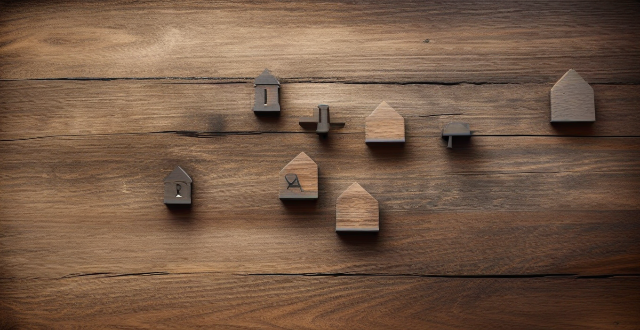
What are some common pitfalls to avoid when buying second-hand items ?
When buying second-hand items, it's important to inspect them thoroughly for any signs of damage or wear and tear. You should also verify the authenticity of luxury items and research their value to ensure you're getting a fair price. Be wary of scams and consider the return policy before making a purchase. By following these tips, you can avoid common pitfalls and find great deals on high-quality products.
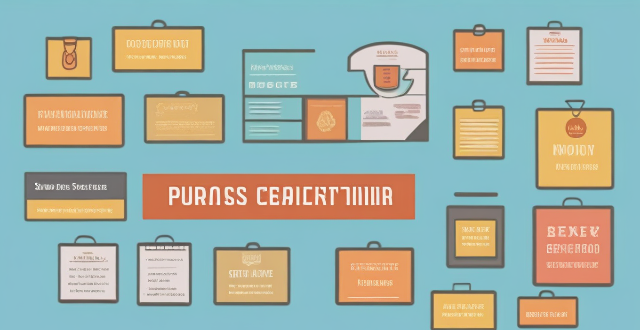
What are some essential factors to consider when buying secondhand items ?
When purchasing secondhand items, several essential factors should be considered to ensure the best value for money. These include the condition of the item, its price, the reputation of the seller, authenticity, age and lifespan, and safety and legality. By considering these factors, buyers can make informed decisions and avoid potential pitfalls.

What are the essential items to pack for a beach vacation ?
When planning a beach vacation, it's essential to pack the right items. Must-haves include swimsuits, cover-ups, sun protection, footwear, towels, beach gear, water activity equipment, and extras like a waterproof phone case and first aid kit. Personalize your packing list based on your specific needs and activities planned during your beach vacation.
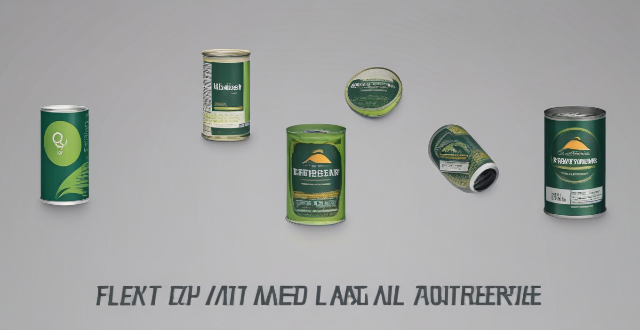
How can I save money while shopping for luxury items ?
Shopping for luxury items doesn't have to be expensive if you follow these tips. Set a budget, research prices, wait for sales, choose timeless designs, invest in quality, consider pre-owned items, negotiate prices, and avoid impulse buying to save money while enjoying the finer things in life.

What are the essential items to pack for a backpacking trip across Europe ?
When backpacking across Europe, it's crucial to pack essential items that cater to your needs during the journey. These include versatile and lightweight clothing, comfortable shoes, warm layers, basic toiletries, sun protection, a first aid kit, a well-fitted backpack, a sleeping bag, a headlamp or flashlight, power bank and chargers, a travel adapter, a camera, travel documents and money, a reusable water bottle, a daypack, a travel journal and pen, and a lock. Packing light is key for an enjoyable trip.

What are the best practices for recycling household items ?
Recycling household items is crucial for reducing waste and conserving resources. Best practices include knowing local guidelines, cleaning items, flattening cardboard, separating recyclables, using bins properly, donating usable items, composting organic waste, and buying products with recyclable packaging. By following these steps, individuals can contribute to a more sustainable future and reduce their environmental impact.
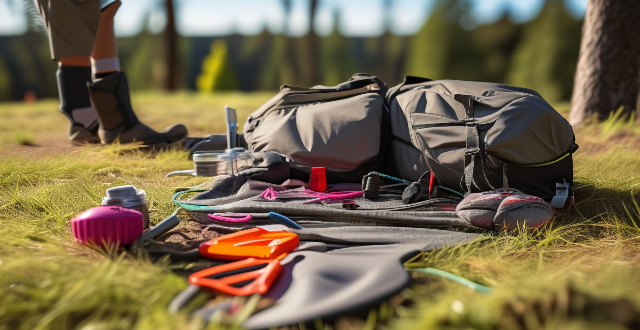
What are some essential sports equipment for outdoor activities like hiking and camping ?
When engaging in outdoor activities like hiking and camping, it is important to have the right sports equipment for safety, comfort, and enjoyment. Essential items include appropriate footwear such as hiking boots and waterproof socks, weather-appropriate clothing, backpacks and bags with dry bags or waterproof containers, sleeping gear like tents and sleeping bags, cooking and eating utensils, lighting and navigation tools, a first aid kit, and miscellaneous items such as multi-tools, sunscreen, and emergency signaling devices. Tailor your gear list to the specific needs of your adventure, check the weather forecast before heading out, and be prepared for any sudden changes in climate or terrain.

What are some fast techniques for sorting and storing items ?
Sorting and storing items can be a time-consuming task, but there are several fast techniques that can help you organize your belongings efficiently. Here are some tips to get started: 1. Declutter First: Remove unnecessary items from your space. Donate or sell items that are still in good condition. Dispose of items that are broken or unusable. 2. Categorize Your Items: Categorize your items into groups based on their purpose, frequency of use, or any other criteria that make sense for your situation. This will help you determine where each item should be stored. 3. Use Containers and Labels: Invest in containers of various sizes to store your sorted items. Clear containers are great because they allow you to see what's inside without opening them. Label each container with its category or contents to make it easy to find what you need quickly. 4. Utilize Vertical Space: Shelves, hanging organizers, and wall-mounted racks can help maximize your storage capacity and keep things off the floor. 5. Maintain Organization: After sorting and storing your items, it's crucial to maintain their organization regularly. Set aside time each week or month to go through your belongings and ensure everything is in its proper place.

Do buy one get one free deals apply to sale items as well ?
Buy one get one free (BOGO) deals are a popular marketing strategy used by retailers to boost sales. These offers can be tempting, but it's important to understand the terms and conditions associated with them. In this article, we will explore whether BOGO deals apply to sale items as well. Before diving into the specifics of sale items, let's first clarify what BOGO deals entail. Typically, a BOGO deal allows you to purchase one item at full price and receive another item of equal or lesser value for free. There may be restrictions on which products are eligible, so it's essential to read the fine print before making a purchase. Now, let's address the main question: do BOGO deals apply to sale items as well? The answer is that it depends on the retailer's policies. Some retailers may include sale items in their BOGO promotions, while others may not. Here are some factors to consider: - Retailer Policy: Each retailer has its own policy regarding BOGO deals and sale items. It's crucial to check the terms and conditions of the offer to see if sale items are included. - Promotion Details: Pay attention to the details of the promotion. Some BOGO deals may specifically state that they are only applicable to regular-priced items, excluding sale items. - Timing: If a BOGO deal overlaps with a sale event, it's possible that both discounts could be applied. However, this is not guaranteed and should be confirmed with the retailer. If you're looking to take advantage of BOGO deals, here are some tips to help you maximize your savings: - Plan Ahead: Keep an eye out for upcoming sales events and BOGO promotions. This way, you can plan your purchases accordingly and potentially stack multiple discounts. - Read Reviews: Before making a purchase, read reviews from other customers who have taken advantage of BOGO deals. This can give you insight into which products are worth buying and any potential pitfalls to avoid. - Compare Prices: Even with a BOGO deal, it's still important to compare prices across different retailers. Sometimes, a sale item at one store may be cheaper than a BOGO deal at another store. In conclusion, whether BOGO deals apply to sale items depends on the retailer's policies and the specific details of the promotion. To make the most of these offers, it's essential to read the fine print, plan ahead, and compare prices across different retailers. By following these tips, you can maximize your savings and enjoy the benefits of BOGO deals without breaking the bank.
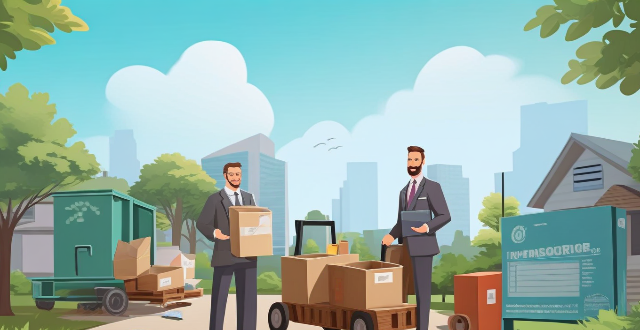
What are the benefits of recycling and reusing second-hand items ?
Recycling and reusing second-hand items offer significant benefits for the environment, economy, and society. By reducing landfill waste, conserving natural resources, and lowering emissions, these practices help to mitigate environmental challenges. Economically, they provide cost savings for individuals and create job opportunities. Socially, they promote sustainability and community engagement. Overall, recycling and reusing second-hand items are essential steps towards a more sustainable future.

How do I ensure I don't forget any items when creating a shopping list ?
When creating a shopping list, it's important to ensure that you don't forget any items. Here are some tips to help you make sure your list is complete: 1. Start with a template that includes all the essential items you need on a regular basis. 2. Divide your list into categories such as produce, meat, dairy, household items, etc. 3. Check inventory before making your shopping list to avoid buying duplicates or unnecessary items. 4. Use technology to create digital shopping lists and receive reminders. 5. Keep your list visible in a prominent location. 6. Review your list regularly throughout the week and add new items as needed. 7. Ask family members or friends if they need anything from the store. 8. Double-check your list before leaving the house to ensure you haven't missed any items. By following these tips, you can create a comprehensive shopping list that ensures you don't forget any items while shopping.

What are the essential items to bring for a scuba diving or snorkeling trip ?
When planning a scuba diving or snorkeling trip, it's important to be prepared with the right gear and equipment. Here are some essential items to consider bringing: ## Scuba Diving ### Personal Gear - **Wetsuit or Drysuit**: Depending on the water temperature, you may need a wetsuit or drysuit to keep warm. - **Fins, Mask, and Regulator**: These are the basic pieces of scuba equipment that you'll need for each dive. - **Dive Computer**: A dive computer helps you track your depth, time, and nitrogen levels. - **Buoyancy Control Device (BCD)**: A BCD helps you adjust your buoyancy underwater. - **Dive Watch**: A watch with a timer function can help you keep track of your dive time. - **Dive Light**: A dive light is useful for exploring underwater caves or for night dives. - **Dive Knife**: A dive knife can be used for safety purposes or to cut through fishing line or nets. - **Dive Boots**: Dive boots protect your feet from sharp rocks and coral. - **Dive Gloves**: Dive gloves protect your hands from cold temperatures and abrasions. ### Safety Equipment - **First Aid Kit**: A first aid kit should include items such as bandages, antiseptic wipes, and pain relievers. - **Signal Whistle**: A signal whistle can be used to attract attention if you need assistance. - **Surface Marker Buoy (SMB)**: An SMB can be deployed to mark your position on the surface while you're underwater. - **Dive Flag**: A dive flag alerts boaters and other water users that there are divers in the area. - **Oxygen Boost**: An oxygen boost can be used in case of decompression sickness. ## Snorkeling ### Personal Gear - **Snorkeling Mask**: A well-fitting mask is essential for clear vision underwater. - **Snorkeling Fins**: Fins help you move more efficiently through the water. - **Snorkeling Vest**: A snorkeling vest provides added buoyancy and comfort while swimming. - **Sun Protection**: Sunscreen, sunglasses, and a hat are important for protecting your skin and eyes from the sun's harmful rays. - **Waterproof Camera**: A waterproof camera allows you to capture memories of your underwater adventures. - **Rash Guard**: A rash guard provides an extra layer of protection against the sun and abrasions. - **Dry Bag**: A dry bag can be used to store your belongings while you're in the water. ### Safety Equipment - **Life Jacket**: A life jacket is important for staying afloat if you become tired or encounter rough waters. - **Whistle**: A whistle can be used to attract attention if you need assistance. - **Water Shoes**: Water shoes provide protection for your feet while walking on rocky or slippery surfaces. - **Floatation Device**: A floatation device such as a pool noodle or kickboard can be used for added stability and support while swimming.

What is the ideal way to pack fragile items for a journey ?
Packing fragile items for a journey can be a daunting task, but with the right approach, you can ensure that your precious belongings arrive at their destination safely. Here are some tips on how to pack fragile items ideally: 1. Use proper packing materials such as bubble wrap, packing paper, foam peanuts, and anti-static polyethylene bags. 2. Wrap each item individually to reduce the risk of damage during transit. 3. Use boxes of appropriate size to accommodate the item without too much extra space or pressure. 4. Label boxes appropriately with clear, legible writing to indicate that the box contains fragile items and which direction is up.

What are some essential items every woman should carry for safety while traveling ?
Traveling can be an exciting and enriching experience, but it's important to prioritize safety, especially for women who may face unique challenges. Here are some essential items that every woman should carry to ensure their safety while on the road: 1. Personal Alarm 2. Pepper Spray 3. Whistle 4. Mobile Phone 5. ID and Emergency Contact Information 6. First Aid Kit 7. Money and Cards 8. Chargers and Power Banks 9. Headphones or Earbuds 10. Trustworthy Travel Companion (if possible) 11. Knowledge of Local Area and Culture 12. Door Stop Alarm or Wedge 13. Reflective Gear or Wearable Tech 14. Water Bottle 15. Mini Flashlight or Keychain Light 16. Duct Tape or Cable Ties 17. Extra Clothing and Rain Gear 18. Multi-tool or Small Knife 19. Sun Protection 20. Seat Cutter or Glass Breaker

How do I know if the discounted items at Outlet Stores are of good quality ?
Outlet stores offer discounted items, but it's important to assess their quality before buying. Check for manufacturer defects, research brand reputation, compare prices with non-discounted items, and ask about return policies.

What are some creative ways to repurpose second-hand items ?
Repurposing second-hand items is a creative and sustainable practice that can save money and reduce waste. Here are some ideas for giving new life to pre-loved items: furniture makeover, clothing transformations, kitchenware reinvention, accessory revamps, artwork and décor, and kids' toys reimagined. By getting creative with second-hand items, we can contribute to promoting sustainability while saving money.

How can I safely transport large or fragile second-hand items ?
The article provides a detailed guide on how to safely transport large or fragile second-hand items. It starts by listing the necessary packing materials and then moves on to assessing the item for pre-existing damage. The article emphasizes the importance of disassembling larger items, proper packing techniques for both fragile and large items, and loading the vehicle carefully. It also includes tips for safe driving during transit and careful unloading. The article concludes with a recommendation to consult professional movers when unsure about handling such items.

What are the top websites for purchasing second-hand or refurbished items ?
Purchasing second-hand or refurbished items is a great way to save money while also being environmentally conscious. Here are some of the top websites for buying such items: 1. eBay is one of the largest online marketplaces where you can find both new and used items. It offers a wide range of products, including electronics, clothing, furniture, and more. 2. Craigslist is a classified advertisements website where people can post listings for various items, including second-hand goods. 3. Facebook Marketplace is a platform within Facebook where users can buy and sell items locally. 4. OfferUp is a mobile app that allows users to buy and sell items locally. 5. Swappa is an online marketplace specifically designed for buying and selling gently used technology like smartphones, laptops, and tablets. 6. Gazelle is a website that specializes in buying and selling refurbished electronics, including smartphones, tablets, and laptops.

How can I effectively describe my second-hand items to attract buyers ?
When selling second-hand items, it's important to provide a clear and compelling description that captures potential buyers' attention. Here are some tips on how to effectively describe your items: 1. Keep the title short and sweet, using keywords related to the item and mentioning the brand and model if applicable. 2. Provide a brief overview of the item's condition and features, and mention any standout qualities or unique aspects. 3. Clearly state the condition of the item, using descriptive words like "like new," "gently used," or "well-loved." If there are any flaws or damages, mention them explicitly. 4. Highlight the main features and benefits of the item, using bullet points for easy reading and emphasizing any additional accessories or bonus items included. 5. Include multiple high-quality photos showing different angles and details, making sure they are well-lit and focused. Consider adding a photo of the item in use or with a size reference. 6. Set a fair price by researching similar items to determine a competitive price point, and consider offering a negotiation range or stating "firm" if you're not willing to budge. 7. Mention where you are located and whether local pickup is available, and if you offer shipping, specify the cost and estimated delivery time. 8. Provide a way for interested buyers to contact you, such as an email address or phone number, and consider adding a link to your profile or website for more information about other items you may have listed. By following these guidelines, you can create an effective description that will help attract potential buyers and increase your chances of successfully selling your second-hand items.

Are there any specific items that cannot be included in a tax-free shopping claim ?
Certain items may not qualify for tax exemption in tax-free shopping, including alcohol and tobacco products, perishable food items, medications and prescription drugs, firearms and weapons, and hazardous materials. The specific items that cannot be included in a tax-free shopping claim may vary depending on the country's customs regulations and policies.

How do I properly clean and sanitize second-hand items before using them ?
The provided text offers a comprehensive guide on properly cleaning and sanitizing second-hand items to ensure their safety for use. The steps are divided into general cleaning procedures, specific instructions for different types of items like clothing, footwear, furniture, kitchenware, toys, and electronics, and additional tips on sanitization. The process involves inspection, initial cleaning, disassembly (if needed), soaking for smaller items, and using appropriate cleaning methods for various items. Sanitizing tips emphasize the wise use of disinfectants, ensuring ventilation, protecting oneself from harsh chemicals, and drying items thoroughly to prevent mold growth. This detailed guide ensures that second-hand items are not only reused but also recycled safely.

What are some popular online marketplaces for buying and selling second-hand items ?
Popular Online Marketplaces for Buying and Selling Second-hand Items Several online marketplaces allow people to buy and sell second-hand items, providing a convenient way to declutter homes, find unique items, and save money. Some of the most popular options include: 1. eBay - a large and well-known platform with buyer protection policies, shipping options, and payment methods. However, it charges listing fees and takes a percentage of each sale. 2. Craigslist - a free classified ads website for various categories, including second-hand items. It allows local transactions, reducing shipping costs and time delays, but lacks buyer protection policies and limited user verification. 3. Facebook Marketplace - a feature within the Facebook app that connects buyers and sellers within their community. It is easy to access and use, but also lacks official buyer protection policies and limited user verification. 4. OfferUp - a mobile app for buying and selling second-hand items locally within a community. It offers a user-friendly interface, in-app messaging, and ratings systems to help ensure secure transactions. However, it may not have as large of a user base compared to other platforms. 5. Poshmark - an online marketplace specifically designed for buying and selling fashion items, including clothing, accessories, and footwear. It offers a dedicated platform for fashion enthusiasts and features such as virtual styling sessions and social media integration. However, it focuses solely on fashion items, limiting its appeal to those looking for other types of second-hand goods. 6. Depop - a social shopping app for buying and selling unique fashion items, including clothing, accessories, and footwear. It offers a visually appealing platform with a strong emphasis on individuality and creativity, direct messaging, and ratings systems. However, it also focuses solely on fashion items and has had some reported issues with customer service and shipping delays.
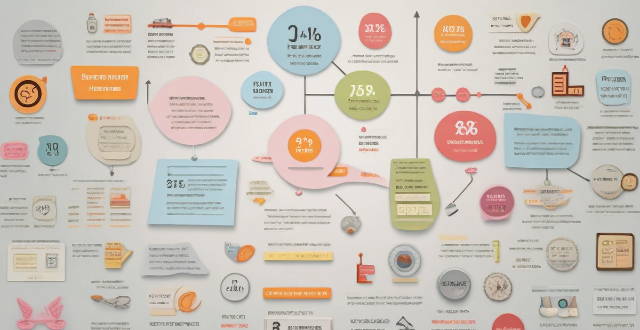
What is the return policy for items purchased during a limited-time promotion ?
When you purchase items during a limited-time promotion, it is important to understand the return policy associated with those purchases. The return policy for items purchased during a limited-time promotion may vary depending on the retailer or brand. Most retailers have a specified time limit for returns, which is usually stated in their return policy. The item must be returned in its original condition, including any packaging and accessories that were included with the purchase. Refunds are typically issued using the same method of payment as the original purchase. There are some exceptions to the general return policy for items purchased during a limited-time promotion, such as final sale items, customized items, and shipping and handling fees. To ensure a smooth return process, keep receipts and packaging, check the return policy before purchasing, and contact customer service if unsure.

How often should I check and replace items in my emergency preparedness kit ?
Maintaining an emergency preparedness kit is crucial for ensuring you have the necessary supplies in case of unexpected events. The frequency of checking and replacing items depends on several factors, including expiration dates and usage. General guidelines include monthly quick inspections, annual detailed reviews, and immediate replacements after use. Specific items to consider are medical supplies, food and water, batteries, clothing, and tools. Best practices include labeling expiration dates, keeping a list, and staying informed. Regular maintenance ensures your kit is always ready for emergencies.